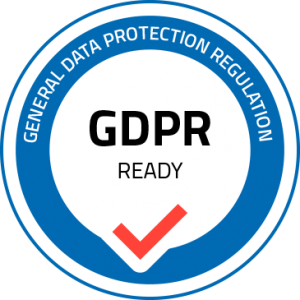This website uses cookies so that we can provide you with the best user experience possible. Cookie information is stored in your browser and performs functions such as recognising you when you return to our website and helping our team to understand which sections of the website you find most interesting and useful.
Administering Medicines
6.1 Administering medicines
Policy statement
While it is not our policy to care for sick children, who should be at home until they are well enough to return to the setting, LGMS will agree to administer medication as part of maintaining their health and well-being or when they are recovering from an illness. We ensure that where medicines are necessary to maintain health of the child, they are given correctly and in accordance with legal requirements.
In many cases, it is possible for children’s GPs to prescribe medicine that can be taken at home in the morning and evening. As far as possible, administering medicines will only be done where it would be detrimental to the child’s health if not given in the setting. If a child has not had a medication before, especially a baby/child under two, it is advised that the parent keeps the child at home for the first 48 hours to ensure there are no adverse effects, as well as to give time for the medication to take effect.
Any level 3 with a up to date first aid qualification is able to administer medication to children who require either prescription medication (eg: antibiotics) or Calpol. To ensure the correct dosage is given there needs to be a witness. Parents must sign a consent form in order that medication get be given. Medicines must be stored in the baby room fridge at the correct temperature. After giving medication the staff member must sign and date with the time administered. This form must be kept in the red folder (accident and medication forms) in the relevant room. In the absence of a level 3 person the manager will administer the medication. LGMS notify our insurance provider of all required conditions, as laid out in our insurance policy.
Procedures
- Children taking prescribed medication must be well enough to attend the setting.
- We only usually administer medication when it has been prescribed for a child by a doctor (or other medically qualified person). It must be in-date and prescribed for the current condition.
- Non-prescription medication, such as pain or fever relief (e.g. Calpol) and teething gel, may be administered, but only with prior written consent of the parent and only when there is a health reason to do so, such as a high temperature. Children under the age of 16 years are never given medicines containing aspirin unless prescribed specifically for that child by a doctor. The administering of un-prescribed medication is recorded in the same way as any other medication. NB: We may administer children’s paracetamol (un-prescribed) for children with the verbal consent of the parents in the case of a high temperature. This is to prevent febrile convulsion and where a parent or named person is on their way to collect the child.
- Children’s prescribed medicines are stored in their original containers, are clearly labelled and are inaccessible to the children. On receiving the medication, [the member of staff checks/I check] that it is in date and prescribed specifically for the current condition.
- Parents must give prior written permission for the administration of medication. [The staff member receiving the medication /I] will ask the parent to sign a consent form (as mentioned above) stating the following information. No medication may be given without these details being provided:
- the full name of child and date of birth
- the name of medication and strength
- who prescribed it
- the dosage and times to be given in the setting
- the method of administration
- how the medication should be stored and its expiry date
- any possible side effects that may be expected
- the signature of the parent, their printed name and the date
- The administration of medicine is recorded accurately in [our/my] medication record book each time it is given and is signed by the person administering the medication [and a witness]. Parents are shown the record at the end of the day and asked to sign the record book to acknowledge the administration of the medicine. The medication record book records the:
- name of the child
- name and strength of the medication
- name of the doctor that prescribed it
- date and time of the dose
- dose given and method
- signature of the person administering the medication and a witness who verifies that the medication has been given correctly
- parent’s signature (at the end of the day).
- We have a standard medication form for recording the administration of medicine and comply with the detailed procedures set out in that publication.
- If the administration of prescribed medication requires medical knowledge, We obtain individual training [for the relevant member of staff] by a health professional eg: Epipen training.
- No child may self-administer. Where children are capable of understanding when they need medication, for example with asthma, they should be encouraged to tell the room leader what they need. However, this does not replace staff vigilance in knowing and responding when a child requires medication.
- We monitor the medication record sheets to look at the frequency of medication given in the setting. For example, a high incidence of antibiotics being prescribed for a number of children at similar times may indicate a need for better infection control.
Storage of medicines
- All medication is stored safely in a locked cupboard or refrigerated as required. Where the cupboard or refrigerator is not used solely for storing medicines, they are kept in a marked plastic box.
- The room leader is responsible for ensuring medicine is handed back at the end of the day to the parent.
- For some conditions, medication may be kept in the setting to be administered on a regular or as-and-when- required basis. Room leaders check that any medication held in the setting, is in date and return any out-of-date medication back to the parent.
Children who have long term medical conditions and who may require ongoing medication
- We carry out a risk assessment for each child with a long term medical condition that requires on-going medication. [This is the responsibility of our manager alongside the key person.] Other medical or social care personnel may need to be involved in the risk assessment.
- Parents will also contribute to a risk assessment. They should be shown around the setting, understand the routines and activities and point out anything which they think may be a risk factor for their child.
- For some medical conditions, [key staff] will need to have training in a basic understanding of the condition, as well as how the medication is to be administered correctly. [The training needs for staff] form part of the risk assessment.
- The risk assessment includes vigorous activities and any other activity that may give cause for concern regarding an individual child’s health needs.
- The risk assessment includes arrangements for taking medicines on outings and advice is sought from the child’s GP if necessary where there are concerns.
- An individual health plan for the child is drawn up with the parent; outlining [the key person’s] role and what information must be shared with other adults who care for the child.
- The individual health plan should include the measures to be taken in an emergency.
- We review the individual health plan every six months, or more frequently if necessary. This includes reviewing the medication, e.g. changes to the medication or the dosage, any side effects noted etc.
- Parents receive a copy of the individual health plan and each contributor, including the parent, signs it.
Managing medicines on trips and outings
- If children are going on outings, [the key person for the child] will accompany the children with a risk assessment, or another [member of staff/childminder/assistant] who is fully informed about the child’s needs and/or medication.
- Medication for a child is taken in a sealed plastic box clearly labelled with the child’s name, the original pharmacist’s label and the name of the medication. Inside the box is a copy of the consent form and a card to record when it has been given, including all the details that need to be recorded in the medication record as stated above. For medication dispensed by a hospital pharmacy, where the child’s details are not on the dispensing label, LGMS will record the circumstances of the event and hospital instructions as relayed by the parents.
- On returning to the setting the card is stapled to the medicine record book and the parent signs it.
- If a child on medication has to be taken to hospital, the child’s medication is taken in a sealed plastic box clearly labelled with the child’s name and the name of the medication. Inside the box is a copy of the consent form signed by the parent.
- This procedure should be read alongside the outings procedure.
Legal framework
- The Human Medicines Regulations (2012)
| This policy was adopted by | LGMS | This policy was adopted by | (name of provider) | ||
| On | 1st September 2022 | On | (date) | ||
| Date to be reviewed | September 2023 | Date to be reviewed | (date) | ||
| Signed on behalf of the provider | Shauna Fosker | Signed on behalf of the provider | |||
| Name of signatory | Shauna Fosker | Name of signatory | |||
| Role of signatory (e.g. chair, director or owner) | Senior Manager | Role of signatory (e.g. chair, director or owner) | |||
Other useful Pre-school Learning Alliance publications
- Medication Administration Record (2015)
- Daily Register and Outings Record (2015)



